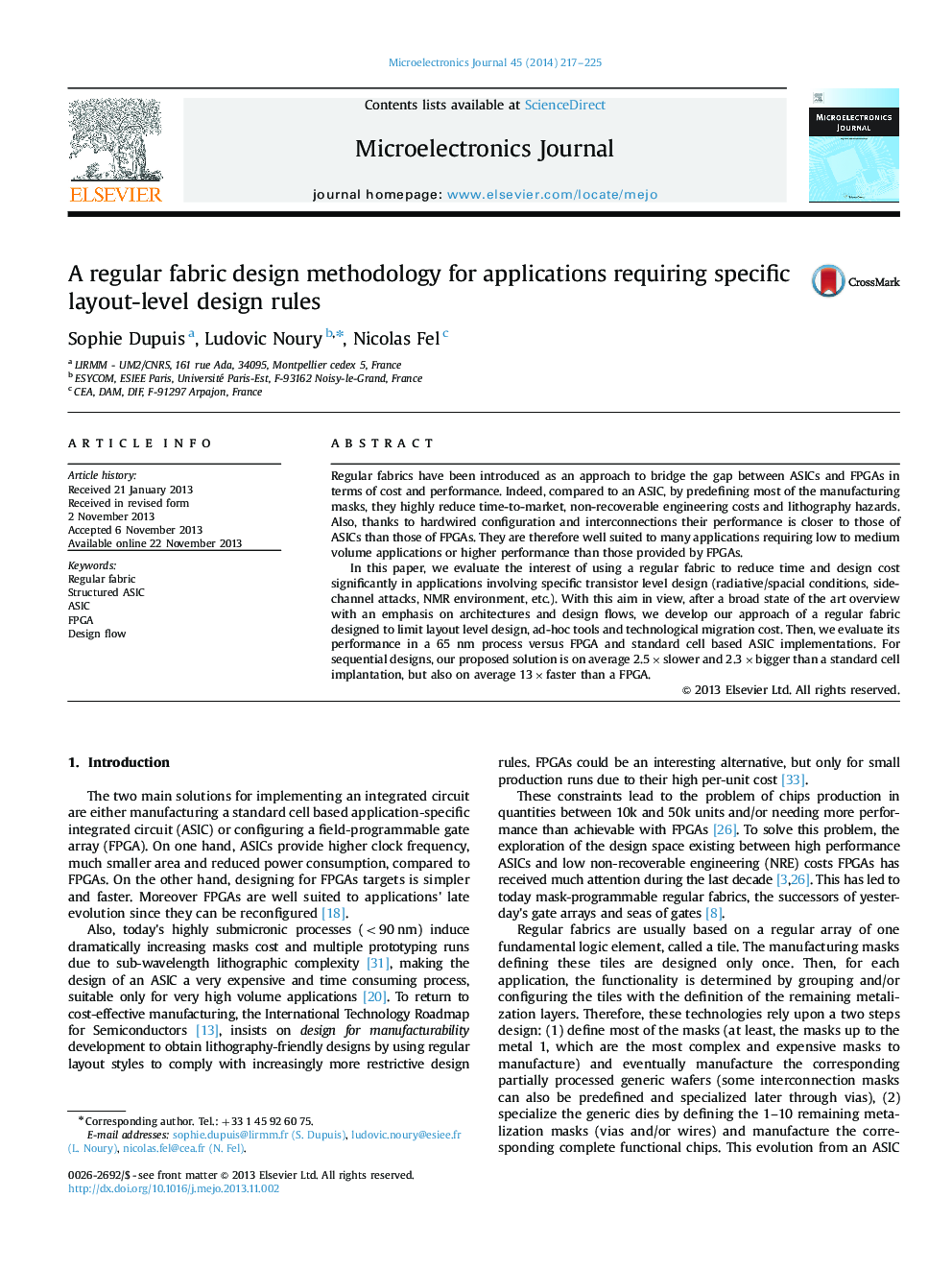| Article ID | Journal | Published Year | Pages | File Type |
|---|---|---|---|---|
| 547262 | Microelectronics Journal | 2014 | 9 Pages |
Regular fabrics have been introduced as an approach to bridge the gap between ASICs and FPGAs in terms of cost and performance. Indeed, compared to an ASIC, by predefining most of the manufacturing masks, they highly reduce time-to-market, non-recoverable engineering costs and lithography hazards. Also, thanks to hardwired configuration and interconnections their performance is closer to those of ASICs than those of FPGAs. They are therefore well suited to many applications requiring low to medium volume applications or higher performance than those provided by FPGAs.In this paper, we evaluate the interest of using a regular fabric to reduce time and design cost significantly in applications involving specific transistor level design (radiative/spacial conditions, side-channel attacks, NMR environment, etc.). With this aim in view, after a broad state of the art overview with an emphasis on architectures and design flows, we develop our approach of a regular fabric designed to limit layout level design, ad-hoc tools and technological migration cost. Then, we evaluate its performance in a 65 nm process versus FPGA and standard cell based ASIC implementations. For sequential designs, our proposed solution is on average 2.5×slower and 2.3×bigger than a standard cell implantation, but also on average 13×faster than a FPGA.
